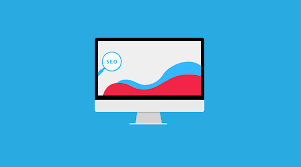Maximizing the SEO Potential of Your Blog: A Beginner's Guide
Blogging has become an essential aspect of digital marketing and a great way to connect with your target audience. However, creating valuable content is not enough to attract visitors to your blog. Search engine optimization (SEO) is the process of improving the visibility of a website or a web page in a search engine's unpaid results. It plays a crucial role in driving organic traffic to your blog and increasing its visibility. SEO can be a complex and ever-changing process, but with the right approach, it can be mastered even by beginners.
This guide will provide an overview of the basics of SEO and how to optimize your blog for search engines. It will cover key topics such as keyword research, on-page SEO, off-page SEO, and measuring and tracking your results.
By following the tips and strategies outlined in this guide, you'll be able to improve your blog's visibility in search engines and increase your chances of reaching your target audience. Whether you are new to blogging or have been running a blog for some time, this guide will provide valuable insights and actionable steps to help you maximize the SEO potential of your blog.
Keyword Research:
Keyword research is one of the most important steps in optimizing your blog for search engines. It involves identifying the keywords and phrases that your target audience is searching for and incorporating them into your blog's content. By understanding the keywords that your audience is using to find your blog, you'll be able to create content that is more relevant and valuable to them.
One of the first things to consider when conducting keyword research is to identify the main topics that your blog covers. This way you’ll get the idea of keyword that should be targeted. Once you have identified the main topics, you can use keyword research tools such as Google Keyword Planner, Ahrefs, SEMrush, and others to find related keywords and phrases. These tools will provide you with valuable insights such as search volume, competition, and related keywords that can help you to refine your keyword list.
When conducting keyword research, it's also important to consider the intent behind the search. Are the keywords being used to find information, to buy a product, or to find a service? This will help you to create content that is more relevant to your target audience.
Additionally, you should aim to include long-tail keywords in your blog content. Long-tail keywords are longer and more specific phrases that are less competitive and have lower search volume. They are more likely to be used by people who are further down the buying funnel and are more likely to convert into customers.
By conducting thorough keyword research, you'll be able to create content that is more relevant to your target audience and improve your chances of ranking for those keywords in search engines.
On-Page SEO:
- Optimizing Title Tags and Meta Descriptions
- Title tags are the text that appears in the browser's tab and is used by search engines to understand the content of the page.
- Meta descriptions are short summaries that appear under the title tag in the search engine results pages (SERPs).
- It's important to include the target keyword in the title tag and meta description, but also make sure it's written in a natural way and entice people to click on the link.
- Creating Optimized Content
- Use the keywords in a natural way throughout the content and avoid keyword stuffing.
- Use header tags (H1, H2, H3) to structure the content and make it more readable.
- Use internal linking to help search engines understand the hierarchy of the content and how the pages on your blog are related.
- Using Headings and Formatting
- Use headings to break the text into sections and make it more readable.
- Use bullet points to make the content more readable.
- Optimizing Images and Videos
- Use descriptive file names and alt tags for images and videos to help search engines understand what the media is about.
- Optimize the size of the media to make sure it loads quickly.
- Creating an XML Sitemap
- XML sitemaps are files that list all the URLs of your blog and help search engines to discover and crawl your pages.
- You can use online tools or plugins to generate XML sitemaps for your blog.
By optimizing the on-page SEO elements, you'll be able to improve the visibility of your blog in search engines, making it easier for your target audience to find your content. Additionally, by providing a good user experience, you will reduce bounce rate and increase dwell time, which are also important factors for search engines ranking.
Off-Page SEO:
- Building Backlinks
- Backlinks are links from other websites that point to your blog.
- They are important for SEO because search engines use them to understand the authority and credibility of your blog.
- Some ways to get backlinks: guest posting on other blogs, creating valuable content that people will naturally want to link to, participating in online communities related to your niche, etc.
- Guest Posting
- Guest posting is the process of writing content for other blogs in your niche.
- By guest posting on other blogs, you can get backlinks to your blog and expose your content to a new audience.
- It's important to find blogs that are relevant to your niche and have a high domain authority.
- Building an Online Presence
- Building an online presence means creating a presence on various online platforms such as social media, forums, and directories.
- By creating profiles on these platforms and actively engaging with your audience, you can increase your visibility and drive more traffic to your blog.
- It's important to choose the platforms that are most relevant to your niche and target audience.
Off-page SEO is all about building a reputation and authority for your blog on the web. By building backlinks, guest posting, and building an online presence, you'll be able to improve your blog's visibility in search engines and drive more traffic to your blog. Additionally, by being present on different platforms you'll be able to increase brand awareness and reach more potential customers.
Measuring and Tracking Your Results:
- Understanding Analytics and Metrics
- Analytics is the process of measuring and analyzing data to understand the performance of your blog.
- Metrics are the specific data points that you are measuring.
- Some important metrics to track include: traffic, bounce rate, time on site, conversions, and search engine rankings.
- Tracking Your Progress
- Tracking your progress over time is important to understand how your blog is performing and what changes you need to make.
- You should track your metrics on a regular basis, such as weekly or monthly.
- Use web analytics tools like Google Analytics, Ahrefs, SEMrush, etc. to track and analyze your metrics.
- Identifying Opportunities and Challenges
- By tracking your metrics and progress, you will be able to identify opportunities and challenges that you need to address.
- Opportunities are areas where your blog is performing well and where you can capitalize to improve your results.
- Challenges are areas where your blog is underperforming and where you need to make changes to improve your results.
Measuring and tracking your results is an essential step in understanding the performance of your blog and identifying areas for improvement. By understanding your metrics and progress, you'll be able to make data-driven decisions that will help you to improve your blog's visibility in search engines and drive more traffic to your blog. Additionally, by identifying opportunities and challenges, you'll be able to optimize your efforts and focus on the areas where you can get the most return on investment.
Conclusion:
In conclusion, search engine optimization (SEO) is a vital aspect of blogging, and it can help to drive more organic traffic to your blog. By following the tips and strategies outlined in this guide, you'll be able to improve your blog's visibility in search engines and increase your chances of reaching your target audience.
Keyword research is the foundation of SEO, and it's important to understand the keywords that your target audience is using to find your blog. On-page SEO, which includes optimizing title tags and meta descriptions, creating optimized content, using headings and formatting, optimizing images and videos, and creating an XML sitemap, can help to improve your blog's visibility and user experience. Off-page SEO, which includes building backlinks, guest posting, and building an online presence, can help to improve your blog's reputation and authority.
Measuring and tracking your results is an essential step in understanding the performance of your blog and identifying areas for improvement. By tracking your metrics and progress, you'll be able to make data-driven decisions that will help you to improve your blog's visibility in search engines and drive more traffic to your blog.
Remember, SEO is an ongoing process, and you'll need to continuously monitor, measure and adjust your strategy to stay ahead of the competition. With the right approach and strategies, you can make your blog more visible, increase your readership, and achieve your business goals.


